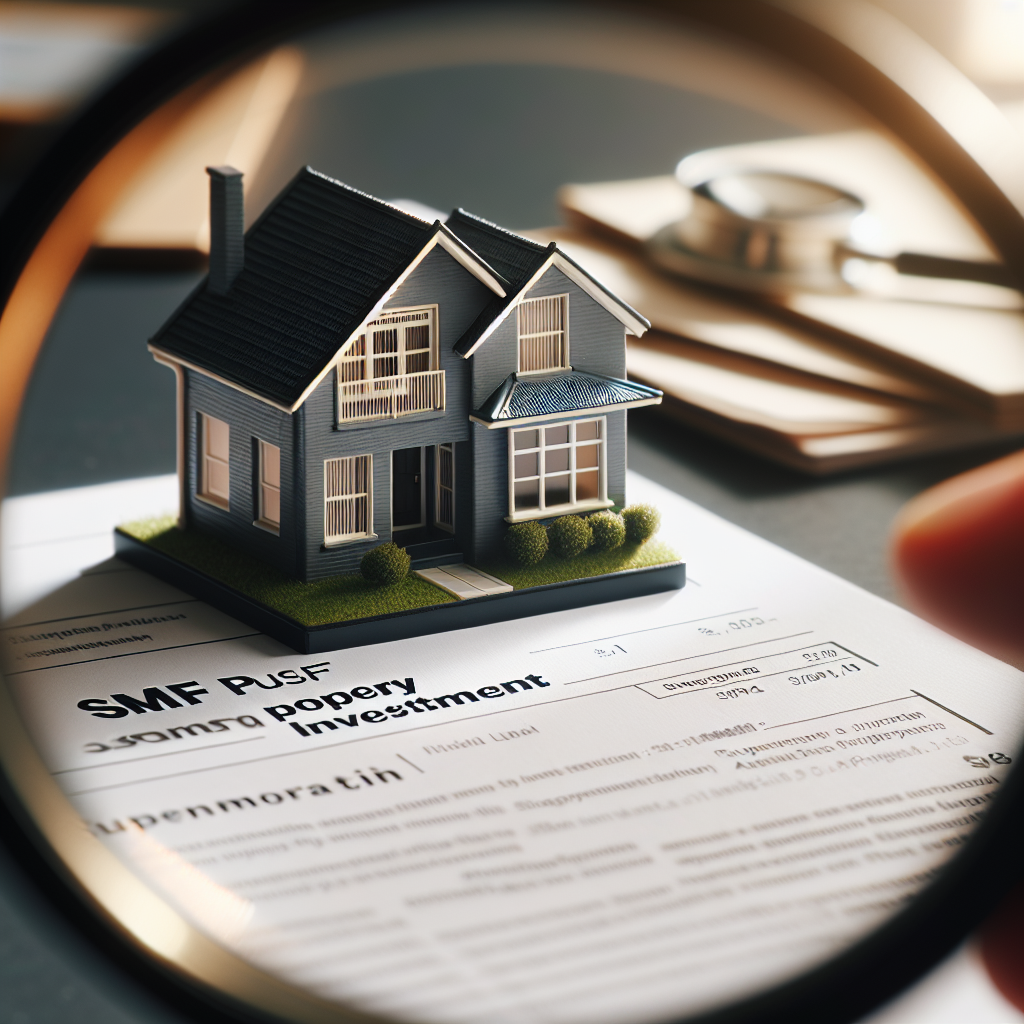In recent years, more Australians have discovered a powerful strategy to take control of their retirement future – buying property with your super through a Self-Managed Super Fund (SMSF). This approach has gained significant traction among investors seeking greater autonomy over their retirement savings and looking for alternative investment avenues beyond traditional super fund offerings.
The concept is straightforward yet revolutionary: establish your own super fund, then use those funds to invest in property, potentially creating a more secure financial foundation for your retirement years. For many Australians, property represents a tangible, familiar asset class that offers both potential capital growth and regular income – making it an attractive option for those planning their financial future.
Understanding Self-Managed Super Funds
Self-Managed Super Funds represent a fundamental shift in how Australians can approach retirement planning, offering unprecedented control over investment decisions.
A Self-Managed Super Fund is exactly what its name suggests – a superannuation fund that you manage yourself. Unlike retail or industry super funds where investment decisions are made by fund managers, an SMSF puts you in the driver’s seat. As a trustee of your own fund, you gain unprecedented control over investment decisions, including the ability to invest in direct property.
This autonomy represents the fundamental appeal of SMSFs. Rather than having your retirement savings allocated according to predetermined investment options, you can tailor your portfolio precisely to your financial goals, risk tolerance, and investment timeframe. For many investors, this means including property as a cornerstone investment – something that’s generally not possible in traditional super funds.
SMSFs operate under a trust structure with members as trustees (or directors if using a corporate trustee), responsible for all fund operations and compliance requirements. This structure provides the legal framework necessary for buying property with your super while adhering to superannuation regulations.
Legal Requirements and Regulations
When buying property with your super through an SMSF, understanding the legal framework is crucial. The cornerstone of all SMSF activity is the ‘sole purpose test’ – a regulatory requirement stipulating that the fund must be maintained for the sole purpose of providing retirement benefits to members, or to their dependants if a member dies before retirement.
This means any property purchased must be for investment purposes only. Members or their relatives cannot live in or use the property, nor can it be rented to related parties except in very limited circumstances. The Australian Taxation Office (ATO) closely monitors SMSF activities, and breaches of these rules can result in severe penalties, including the fund being deemed non-compliant and losing its tax concessions.
When buying property with your super, your SMSF must be the legal owner of the asset, held separately from any personal or business assets. If borrowing is involved, the arrangement must comply with limited recourse borrowing arrangement (LRBA) rules, which require:
- The establishment of a separate bare trust (or holding trust) to hold the property
- The loan to be structured so that the lender’s recourse is limited to the property itself
- No alterations to the property that would change its character until the loan is repaid
Additionally, the investment must align with the fund’s documented investment strategy and meet the stringent requirements of the Superannuation Industry (Supervision) Act 1993. This includes ensuring the investment doesn’t breach the in-house asset rules, which restrict investments involving related parties to no more than 5% of the fund’s total assets.
Step-by-Step Guide to Setting Up an SMSF for Property Investment
If you’re considering buying property with your super, here’s a practical roadmap to guide you through the process:
Establish your SMSF: This involves creating a trust deed that outlines the rules for operation, appointing trustees, registering with the ATO to obtain a Tax File Number and Australian Business Number, and opening a dedicated bank account for the fund.
Develop an investment strategy: Before making any investments, you must formalize a strategy document that outlines investment objectives, risk considerations, diversification approach, and liquidity needs. This strategy must explicitly include property investment as an approved asset class.
Fund your SMSF: Transfer existing superannuation from other funds into your SMSF. This process can take several weeks, so planning ahead is essential. You’ll need sufficient capital for the property deposit, associated purchase costs, and ongoing expenses.
Arrange financing if needed: If your SMSF doesn’t have enough cash to purchase the property outright, you’ll need to establish a limited recourse borrowing arrangement. This typically involves setting up a bare trust and securing a specialized SMSF loan.
Select an appropriate property: The property must meet specific criteria to comply with superannuation laws. It should align with your investment strategy, have strong potential for income and/or capital growth, and satisfy the sole purpose test.
Complete due diligence: Conduct thorough research including building and pest inspections, title searches, and market analysis. Professional advice is essential at this stage to ensure the property is a suitable investment.
Execute the purchase: The bare trustee (if borrowing) will be the legal owner of the property, while the SMSF is the beneficial owner. Ensure all documentation correctly reflects this arrangement and meets compliance requirements.
Implement ongoing management: Establish systems for property management, rent collection, maintenance, and record-keeping to ensure continued compliance with superannuation regulations.
Each step requires careful attention to detail and often necessitates professional guidance to navigate the complex regulatory landscape successfully.
Benefits of Investing in Property Through an SMSF
SMSF property investment offers several key advantages that can significantly enhance your retirement planning strategy when implemented correctly.
Buying property with your super through an SMSF offers several compelling advantages that make it an attractive strategy for many investors:
Tax Efficiency: One of the most significant benefits is the favorable tax treatment. Within an SMSF, rental income is generally taxed at just 15%, compared to your marginal tax rate for personally held investments, which could be up to 45%. Once your SMSF moves into pension phase, the tax benefits become even more substantial – potentially reducing the tax on income and capital gains to zero.
As one property investor recently shared, “The tax benefits alone increased my effective yield by nearly 20% compared to holding the same property in my personal name.”
Enhanced Control: Unlike traditional super funds, an SMSF gives you direct control over property selection, management decisions, timing of purchases and sales, and renovation strategies. This level of control allows you to leverage your property expertise and market knowledge.
Diversification Opportunities: Adding property to your superannuation portfolio provides genuine asset diversification, potentially reducing overall investment risk. Property often performs differently from shares and fixed interest investments, creating a more balanced portfolio.
Wealth Protection: Assets held within superannuation generally receive protection from creditors in the event of personal bankruptcy, offering an additional layer of security for your retirement savings.
Business Premises Opportunities: SMSFs can purchase commercial property that your business uses, creating a situation where your business pays market-rate rent to your SMSF. This represents a unique opportunity to build retirement wealth while supporting your business operations.
Potential for Enhanced Returns: According to recent data, direct property investment has delivered average annual returns of 7.5% over the past decade, combining both rental income and capital growth – making it competitive with other asset classes while often exhibiting lower volatility.
These benefits explain why approximately 30% of all SMSF assets are invested in property, with many fund members reporting satisfaction with both the performance and tangibility of their property investments.
Ongoing Compliance Requirements
After successfully purchasing property with your super, maintaining compliance remains an ongoing responsibility. The ATO maintains strict oversight of SMSFs, making compliance not just important but essential for preserving the fund’s tax concessions.
Key ongoing requirements include:
Annual Audit: Every SMSF must undergo an independent audit each year, conducted by an approved SMSF auditor who examines both financial statements and compliance with superannuation laws.
Regular Valuations: The property must be valued at market rates annually to ensure accurate reporting of the fund’s assets. This valuation influences reporting, contribution caps, and pension calculations.
Arm’s Length Transactions: All property-related transactions, including rental arrangements and maintenance services, must occur on commercial terms and at market rates. This is particularly important if any related parties are involved.
Maintenance of Records: Detailed documentation of all property-related expenses, income, and activities must be maintained. This includes lease agreements, rental receipts, expense invoices, and evidence of market rent reviews.
Investment Strategy Reviews: As circumstances change, the fund’s investment strategy should be reviewed regularly to ensure the property investment remains appropriate for members’ retirement objectives.
Rent Collection: Ensuring prompt payment of rent and addressing any arrears is crucial, as failure to collect market-rate rent can be viewed as providing financial assistance to tenants, potentially breaching superannuation regulations.
As one SMSF trustee noted, “The compliance requirements seemed daunting at first, but with a good administrator and annual reviews with our advisor, they’ve become a manageable part of our routine. The benefits far outweigh the administrative effort.”
Risks and Considerations
While the benefits of SMSF property investment are significant, investors must carefully weigh these against potential risks and challenges before proceeding.
While buying property with your super offers significant potential benefits, it’s not without risks and challenges that warrant careful consideration:
Concentration Risk: Property typically requires substantial capital, which can lead to a large portion of your retirement savings being concentrated in a single asset. This lack of diversification could expose your retirement savings to significant risk if the property performs poorly.
Liquidity Constraints: Property is an illiquid asset that cannot be quickly sold in portions if cash is needed. This can create challenges if fund members need to access benefits or meet minimum pension payment requirements.
Borrowing Complexities: If your SMSF borrows to purchase property, you’ll face additional compliance requirements and costs. Limited recourse borrowing arrangements are more complex and typically more expensive than standard mortgages.
Market Fluctuations: Like all investments, property values can decline. During the 2018-2019 market correction, some Australian cities saw property values fall by up to 15%, highlighting the potential for significant value fluctuations.
Ongoing Costs: Properties require maintenance, management, insurance, and potentially periods of vacancy – all of which affect net returns and must be funded from within the SMSF.
Regulatory Changes: Superannuation rules can and do change. Future legislative amendments could potentially impact the viability or attractiveness of property investments within SMSFs.
Management Responsibilities: As trustees, SMSF members bear the legal responsibility for all decisions and compliance. This responsibility cannot be outsourced, even when professional advisors are engaged.
Recent statistics show that approximately 7% of SMSFs with property investments have experienced compliance issues, most commonly related to related-party transactions or sole purpose test breaches, underlining the importance of ongoing professional guidance.
Conclusion
When executed with careful planning and professional guidance, an SMSF property investment strategy can become the cornerstone of a secure and prosperous retirement.
Buying property with your super through an SMSF represents a powerful strategy that could significantly transform your retirement future when implemented correctly. The combination of control, tax advantages, and potential for both income and capital growth makes property an attractive component of many Australians’ retirement planning.
However, success requires careful planning, strict compliance with regulations, and ongoing management. It’s not a strategy to be undertaken lightly or without appropriate professional guidance. The complexities demand a thorough understanding of both property investment principles and superannuation regulations.
At its core, SMSF property investment embodies the principles of taking control of your financial future through informed decision-making and strategic planning. It aligns perfectly with the philosophy that financial empowerment comes through education, expertise, and integrity in all investment decisions.
For those willing to embrace the responsibilities and navigate the complexities, buying property with your super could be the cornerstone of a more secure and prosperous retirement. As with any significant financial strategy, seeking specialized advice from professionals who understand both property investment and SMSF regulations is essential to maximize benefits while minimizing risks.
Your retirement future deserves nothing less than the most informed approach to building and protecting your wealth. With proper planning and execution, an SMSF property investment strategy could be the key that unlocks your ideal retirement lifestyle.


